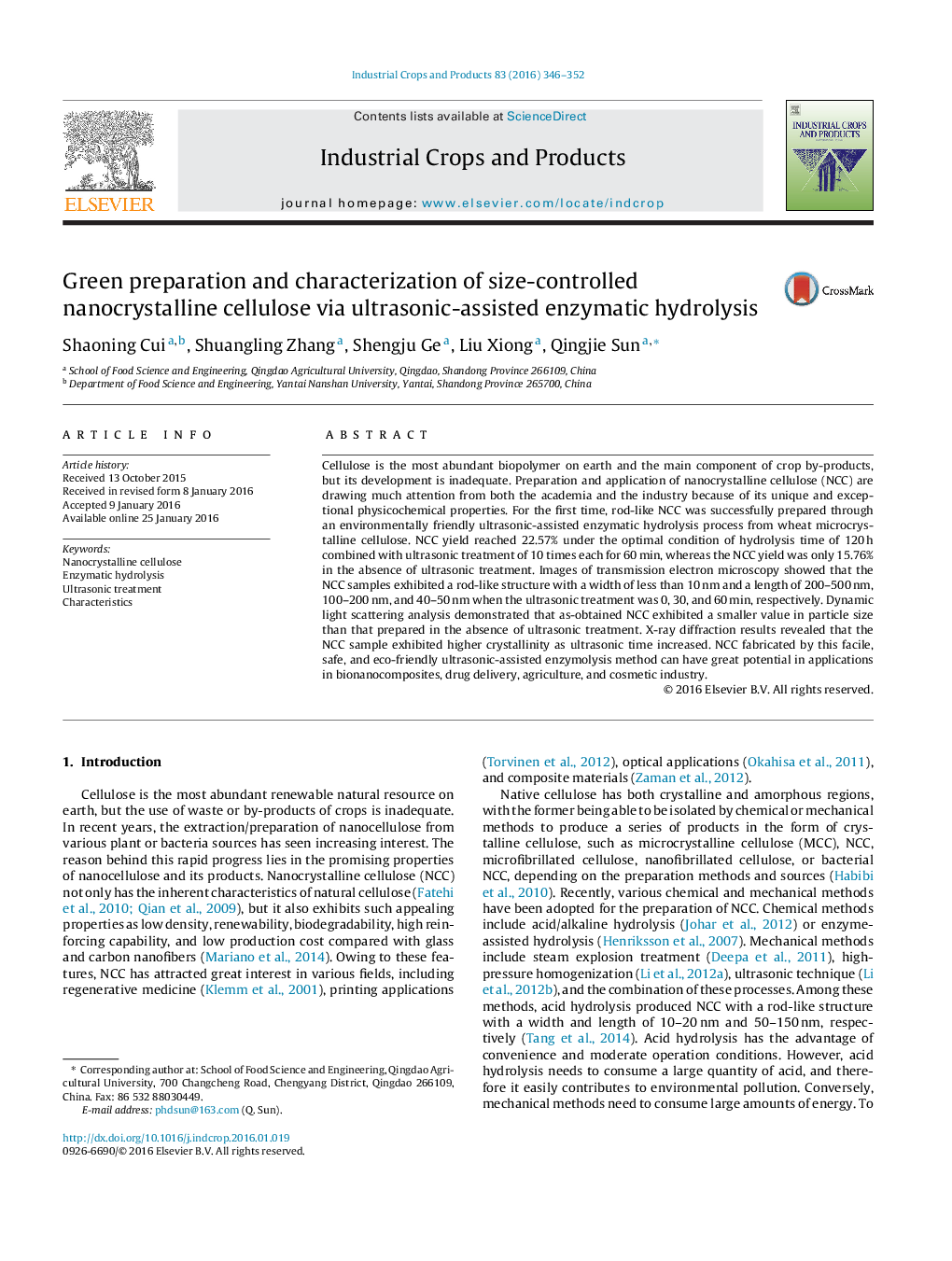| Article ID | Journal | Published Year | Pages | File Type |
|---|---|---|---|---|
| 4512365 | Industrial Crops and Products | 2016 | 7 Pages |
•Nanocrystalline cellulose was prepared by ultrasonic-assisted enzymatic hydrolysis.•Increasing ultrasonic time remarkably enhanced the yield of nanocellulose.•The nanocellulose exhibited a rod-like structure with controlled size.•The crystallinity of nanocrystalline cellulose increased after ultrasonic treatment.
Cellulose is the most abundant biopolymer on earth and the main component of crop by-products, but its development is inadequate. Preparation and application of nanocrystalline cellulose (NCC) are drawing much attention from both the academia and the industry because of its unique and exceptional physicochemical properties. For the first time, rod-like NCC was successfully prepared through an environmentally friendly ultrasonic-assisted enzymatic hydrolysis process from wheat microcrystalline cellulose. NCC yield reached 22.57% under the optimal condition of hydrolysis time of 120 h combined with ultrasonic treatment of 10 times each for 60 min, whereas the NCC yield was only 15.76% in the absence of ultrasonic treatment. Images of transmission electron microscopy showed that the NCC samples exhibited a rod-like structure with a width of less than 10 nm and a length of 200–500 nm, 100–200 nm, and 40–50 nm when the ultrasonic treatment was 0, 30, and 60 min, respectively. Dynamic light scattering analysis demonstrated that as-obtained NCC exhibited a smaller value in particle size than that prepared in the absence of ultrasonic treatment. X-ray diffraction results revealed that the NCC sample exhibited higher crystallinity as ultrasonic time increased. NCC fabricated by this facile, safe, and eco-friendly ultrasonic-assisted enzymolysis method can have great potential in applications in bionanocomposites, drug delivery, agriculture, and cosmetic industry.
